Abstract
A range of behavior—much deemed problematic by society—is treated with behavioral methods or psychotropic medications. Although the processes associated with behavioral interventions have been investigated using conceptual, experimental, and applied analyses, less is known about the behavioral processes associated with the use of psychotropic medication. Psychotropic drugs produce at least two types of effects of behavioral interest: (a) primary effects of drug action on target behaviors and (b) side effects that change the target or other behavior. Although an empirical literature exists regarding the former effects, little attention has been given to the latter topic. In this paper we offer a conceptual analysis of the side effects of psychotropic medication. We propose that the side effects of various drugs can influence behavior by functioning as motivating operations, conditional or discriminative stimuli, or by establishing new response-reinforcer relations. This conceptualization may facilitate the empirical analysis of how psychotropic drugs change behavior.
Keywords: side effects of medication, motivating operations, discriminative stimuli, reinforcer, punisher, psychotropic medication, behavior analysis
Full text
PDF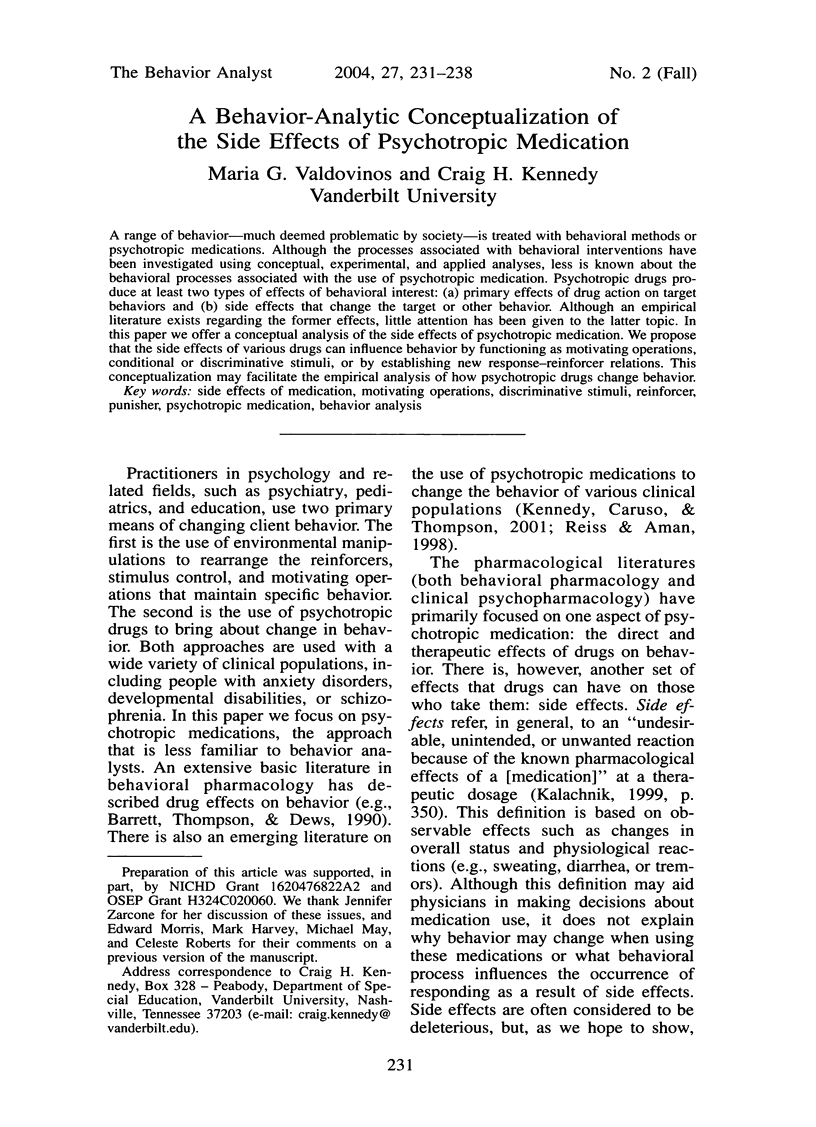
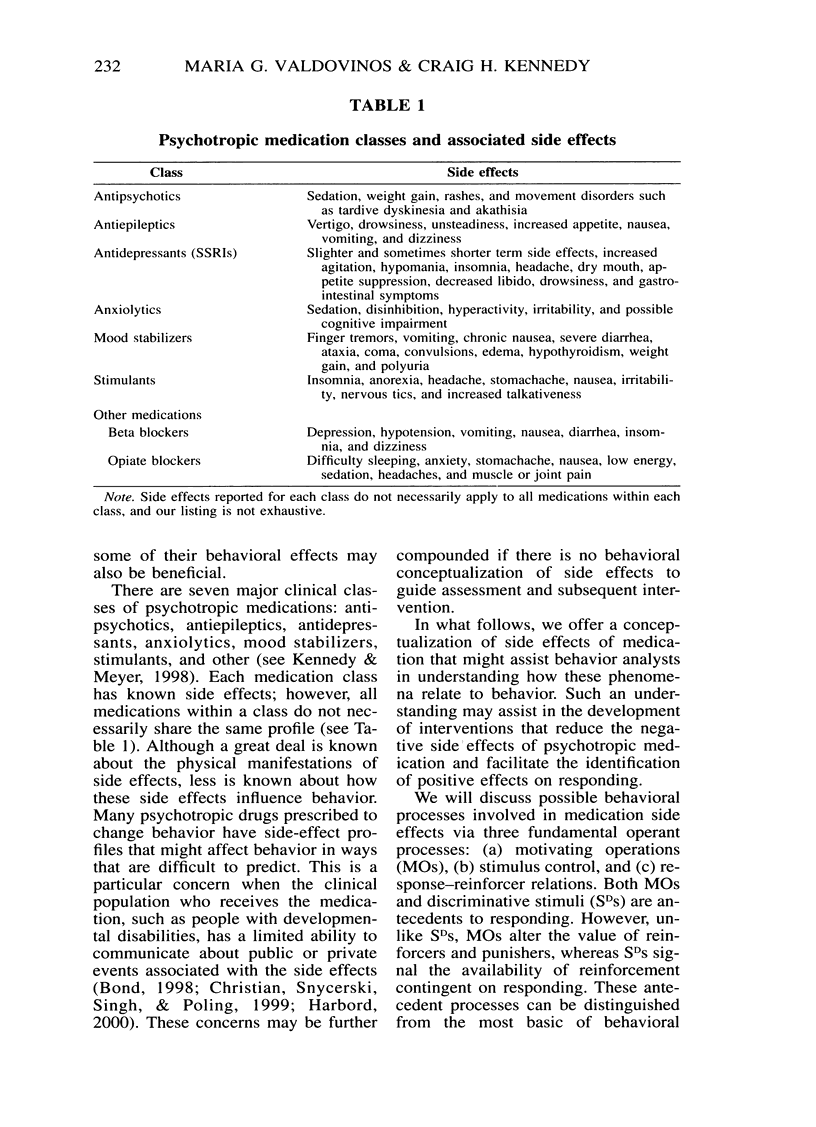
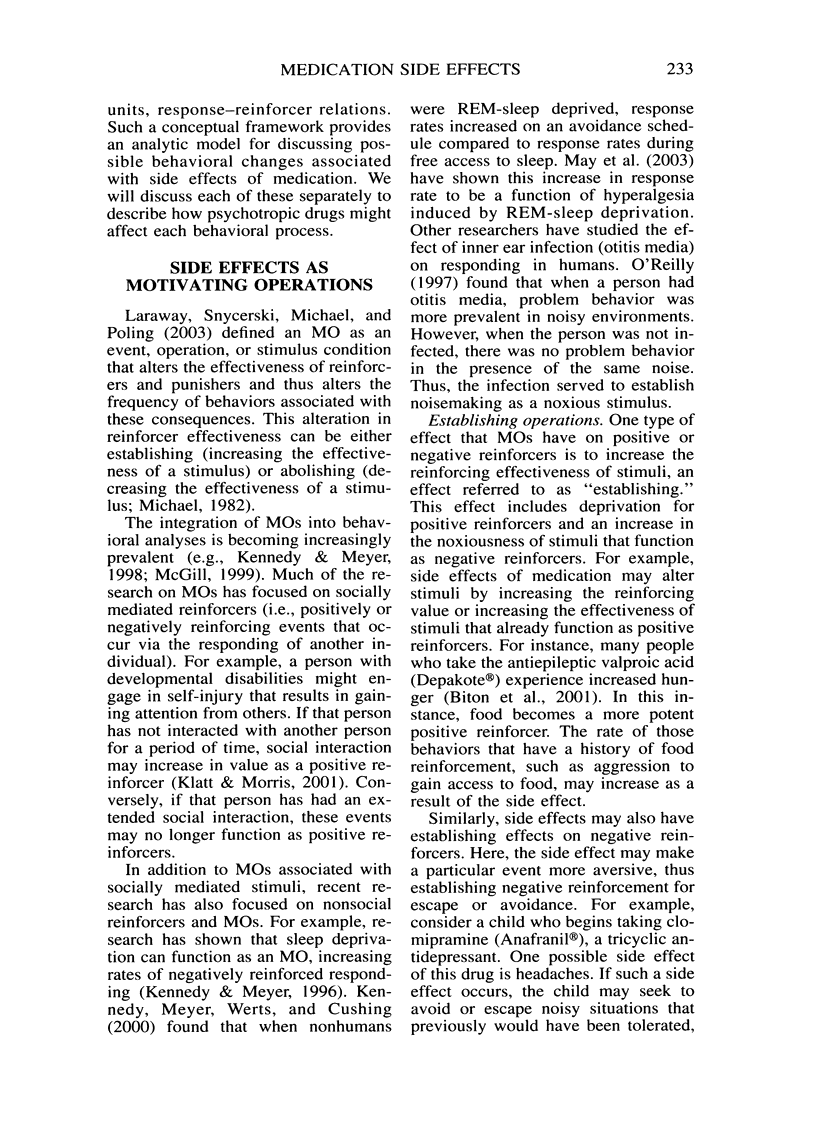
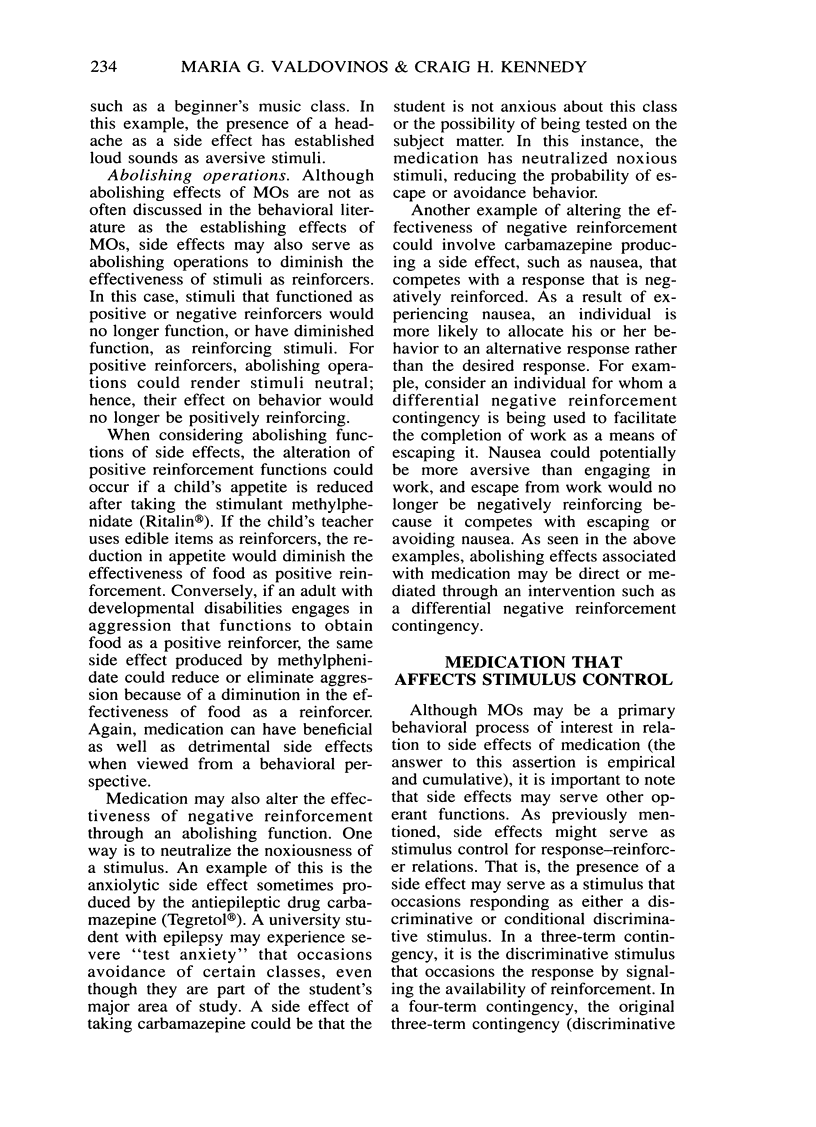
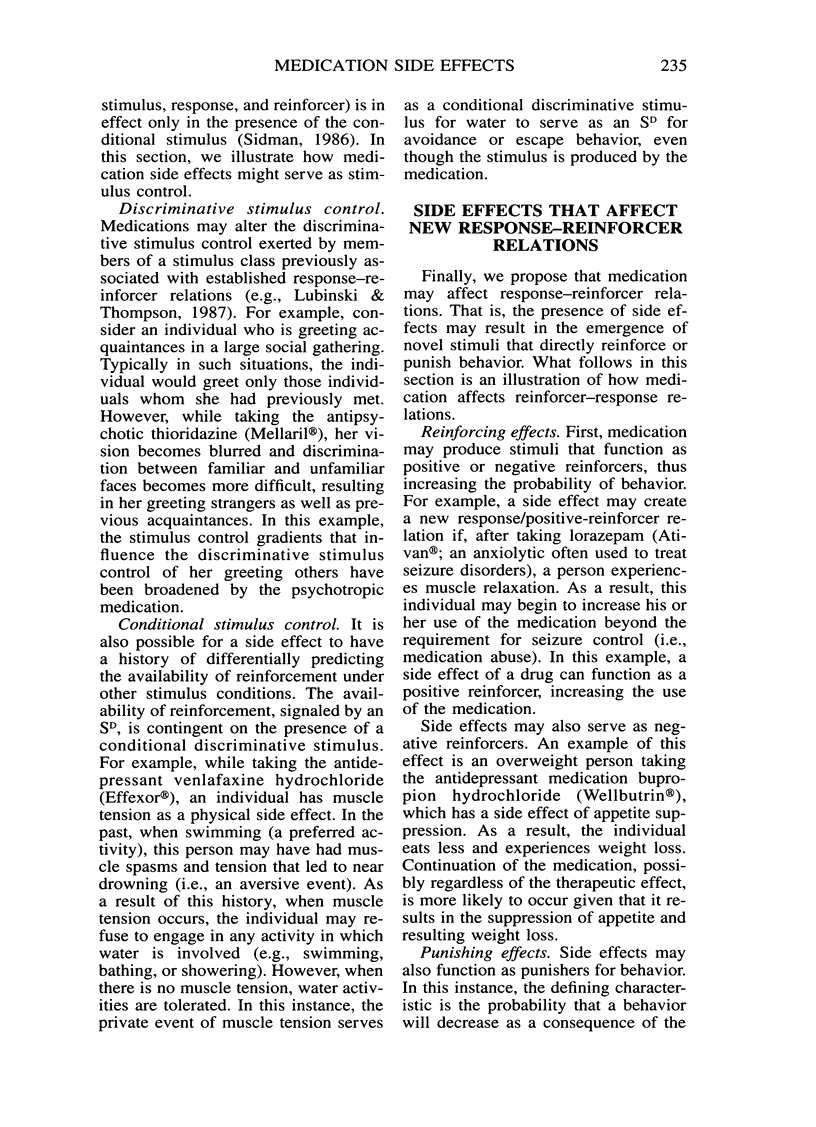
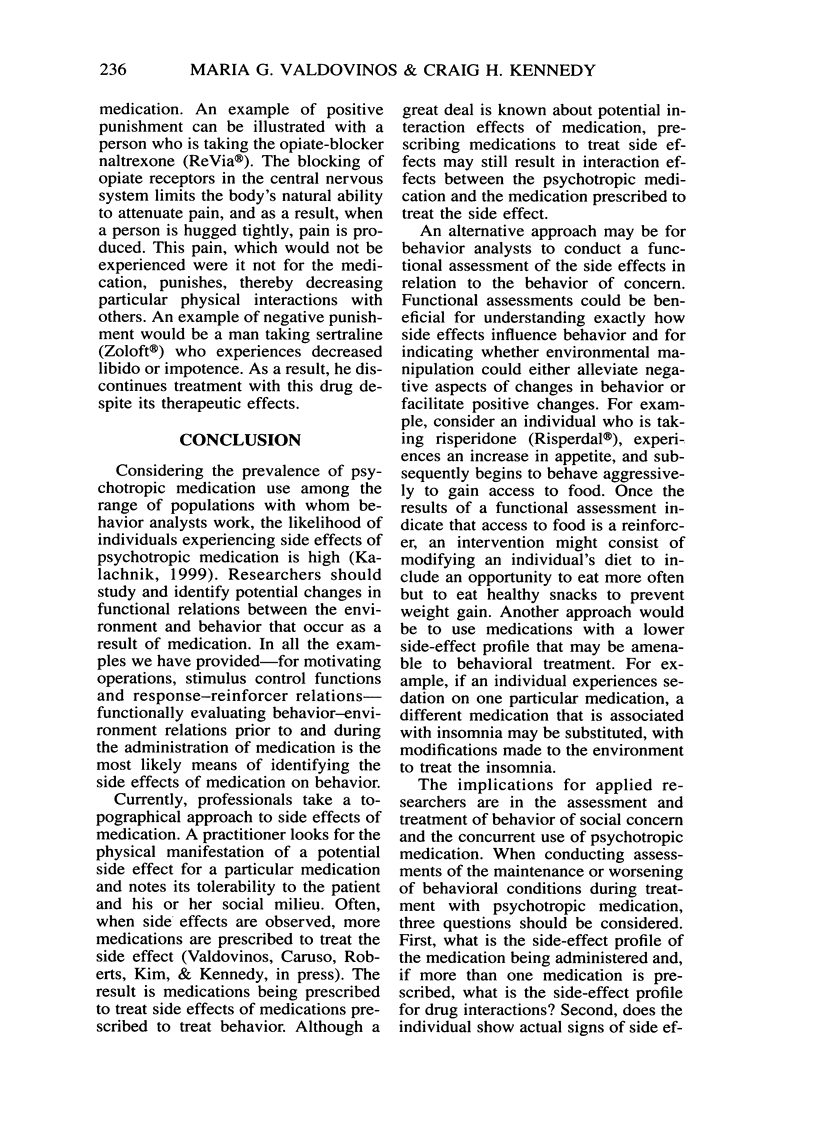
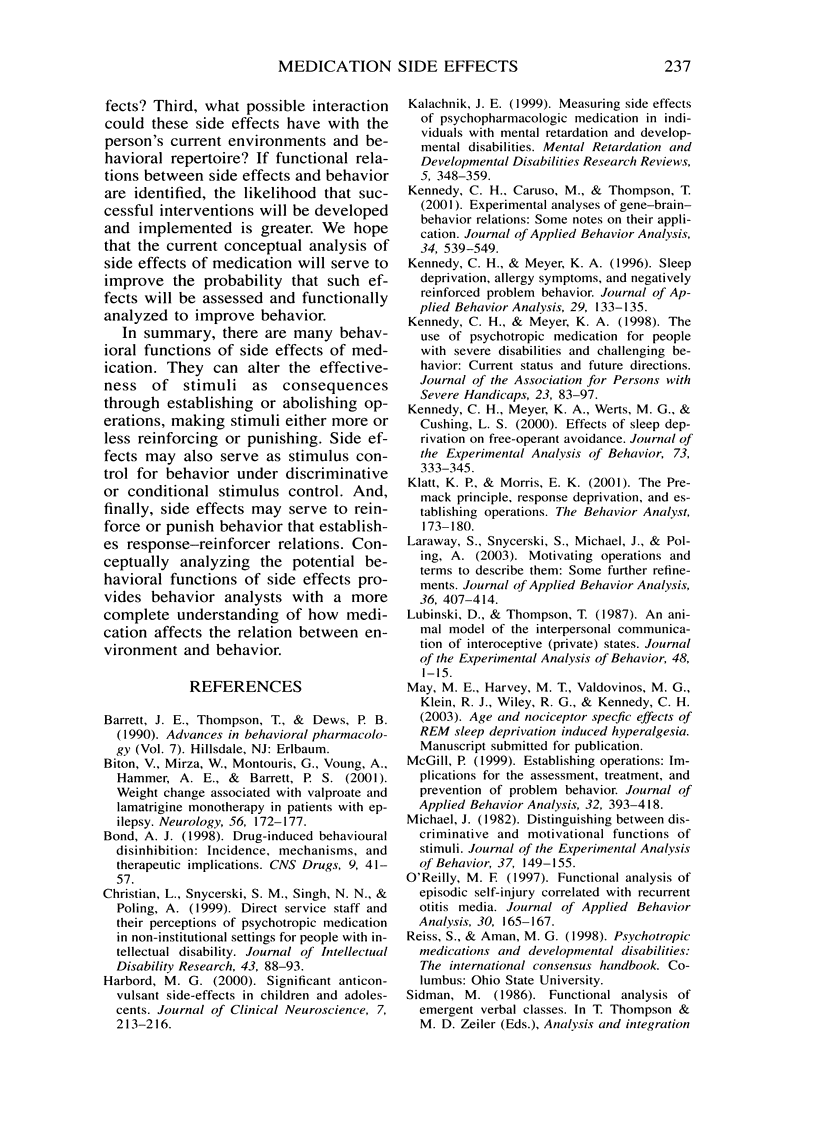
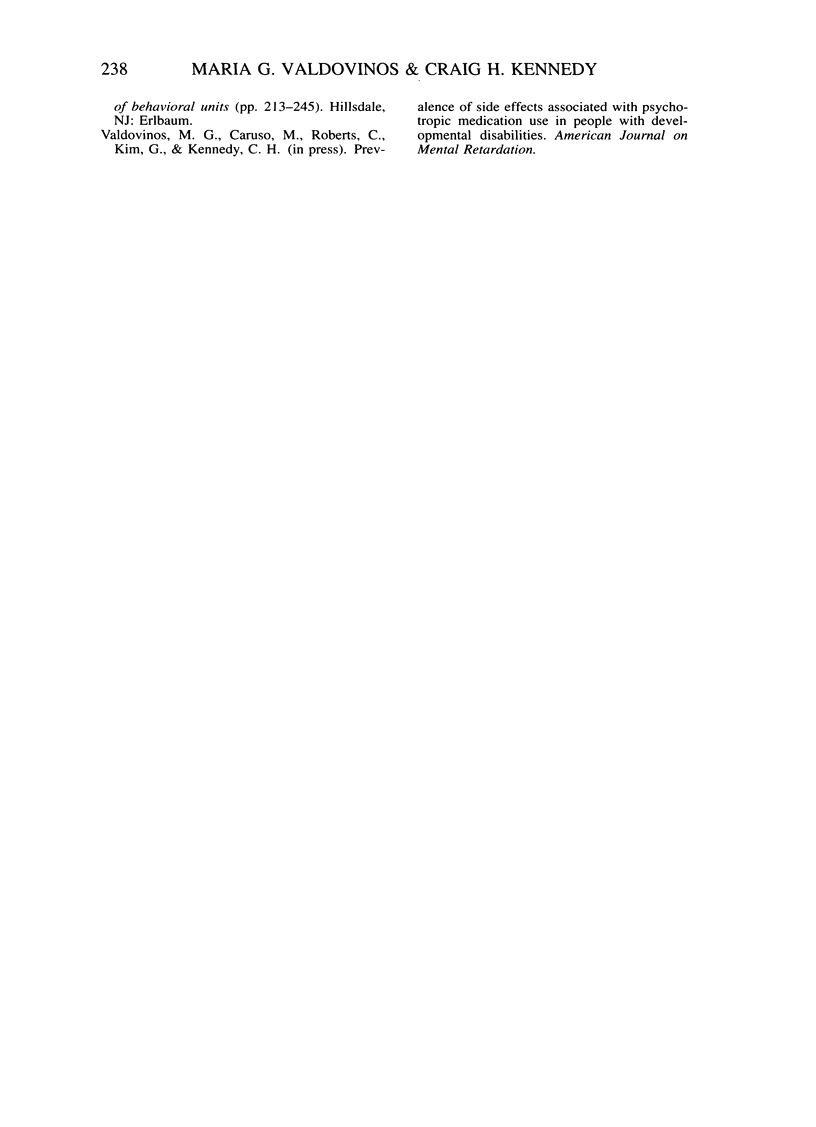
Selected References
These references are in PubMed. This may not be the complete list of references from this article.
- Biton V., Mirza W., Montouris G., Vuong A., Hammer A. E., Barrett P. S. Weight change associated with valproate and lamotrigine monotherapy in patients with epilepsy. Neurology. 2001 Jan 23;56(2):172–177. doi: 10.1212/wnl.56.2.172. [DOI] [PubMed] [Google Scholar]
- Christian L., Snycerski S. M., Singh N. N., Poling A. Direct service staff and their perceptions of psychotropic medication in non-institutional settings for people with intellectual disability. J Intellect Disabil Res. 1999 Apr;43(Pt 2):88–93. doi: 10.1046/j.1365-2788.1999.00182.x. [DOI] [PubMed] [Google Scholar]
- Harbord M. G. Significant anticonvulsant side-effects in children and adolescents. J Clin Neurosci. 2000 May;7(3):213–216. doi: 10.1054/jocn.1999.0190. [DOI] [PubMed] [Google Scholar]
- Kennedy C. H., Caruso M., Thompson T. Experimental analyses of gene-brain-behavior relations: some notes on their application. J Appl Behav Anal. 2001 Winter;34(4):539–549. doi: 10.1901/jaba.2001.34-539. [DOI] [PMC free article] [PubMed] [Google Scholar]
- Kennedy C. H., Meyer K. A. Sleep deprivation, allergy symptoms, and negatively reinforced problem behavior. J Appl Behav Anal. 1996 Spring;29(1):133–135. doi: 10.1901/jaba.1996.29-133. [DOI] [PMC free article] [PubMed] [Google Scholar]
- Kennedy C. H., Meyer K. A., Werts M. G., Cushing L. S. Effects of sleep deprivation on free-operant avoidance. J Exp Anal Behav. 2000 May;73(3):333–345. doi: 10.1901/jeab.2000.73-333. [DOI] [PMC free article] [PubMed] [Google Scholar]
- Klatt K. P., Morris E. K. The premack principle, response deprivation, and establishing operations. Behav Anal. 2001 Fall;24(2):173–180. doi: 10.1007/BF03392028. [DOI] [PMC free article] [PubMed] [Google Scholar]
- Laraway Sean, Snycerski Susan, Michael Jack, Poling Alan. Motivating operations and terms to describe them: some further refinements. J Appl Behav Anal. 2003 Fall;36(3):407–414. doi: 10.1901/jaba.2003.36-407. [DOI] [PMC free article] [PubMed] [Google Scholar]
- Lubinski D., Thompson T. An animal model of the interpersonal communication of interoceptive (private) states. J Exp Anal Behav. 1987 Jul;48(1):1–15. doi: 10.1901/jeab.1987.48-1. [DOI] [PMC free article] [PubMed] [Google Scholar]
- Michael J. Distinguishing between discriminative and motivational functions of stimuli. J Exp Anal Behav. 1982 Jan;37(1):149–155. doi: 10.1901/jeab.1982.37-149. [DOI] [PMC free article] [PubMed] [Google Scholar]
- O'Reilly M. F. Functional analysis of episodic self-injury correlated with recurrent otitis media. J Appl Behav Anal. 1997 Spring;30(1):165–167. doi: 10.1901/jaba.1997.30-165. [DOI] [PMC free article] [PubMed] [Google Scholar]
- doi: 10.1901/jaba.1999.32-393. [DOI] [PMC free article] [Google Scholar]


